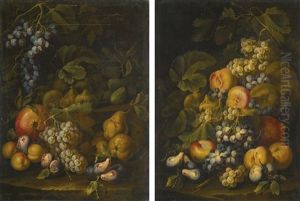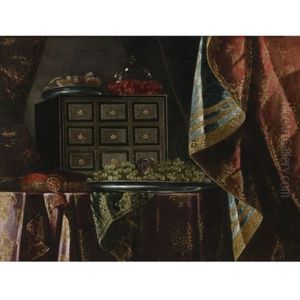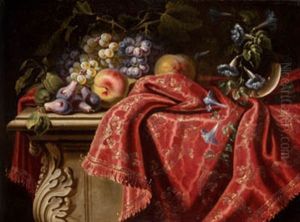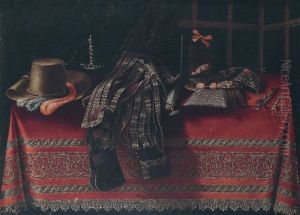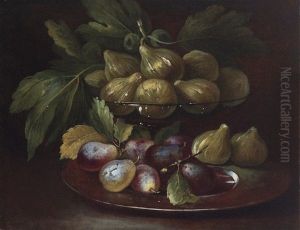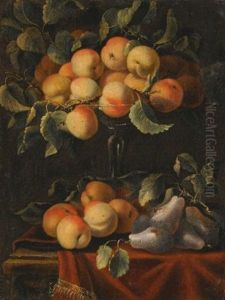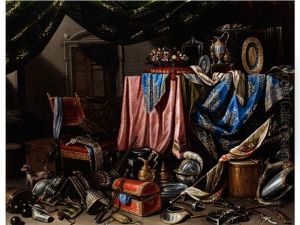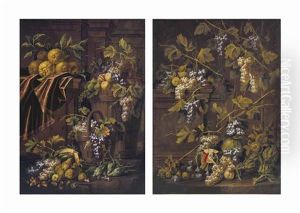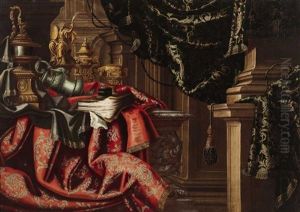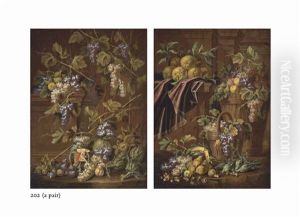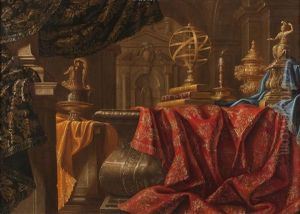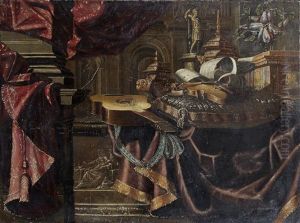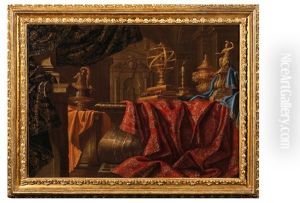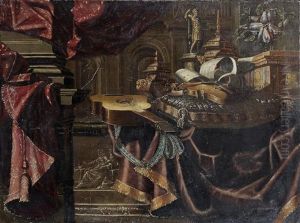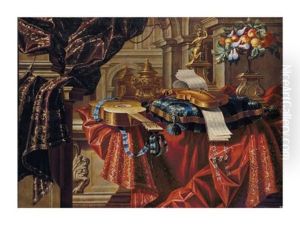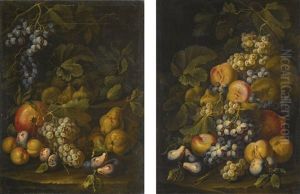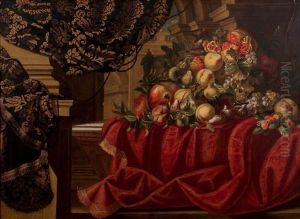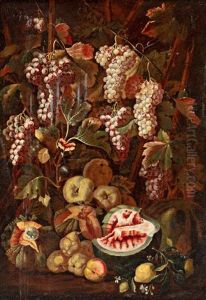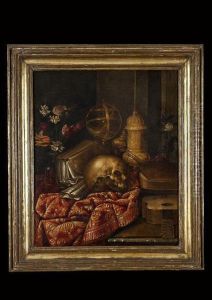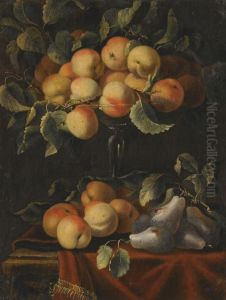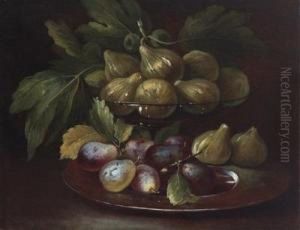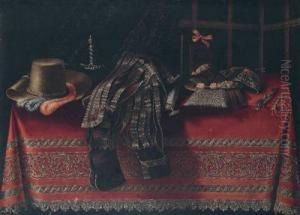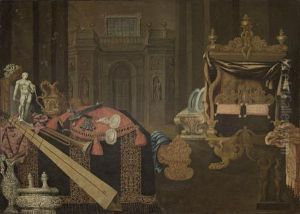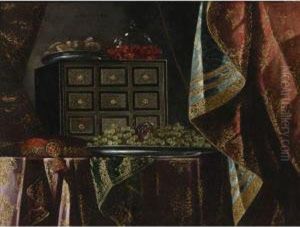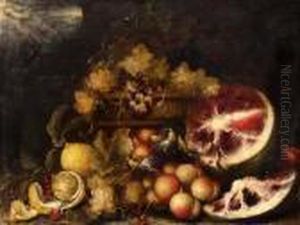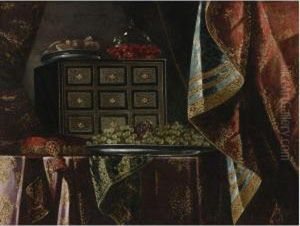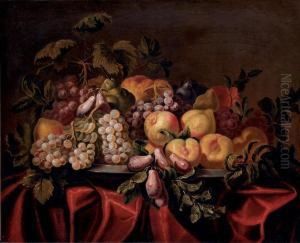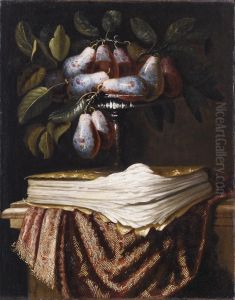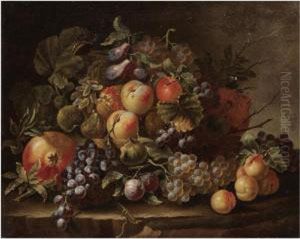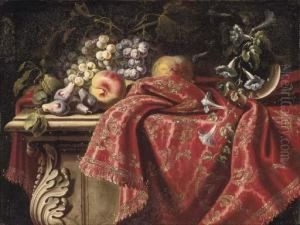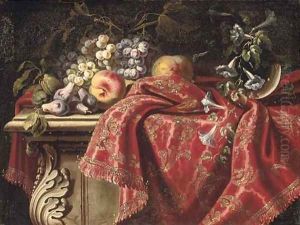Carlo Manieri Paintings
Carlo Manieri was an Italian painter from the Baroque period, born in the 17th century, whose exact birth date remains uncertain. His work primarily focused on still life paintings, a genre that flourished during the Baroque era, characterized by its attention to detail, vivid colors, and intricate compositions. Manieri is particularly noted for his detailed and precise depictions of luxurious objects, including silverware, crystal, and textiles, often arranged in elaborate settings that reflect the wealth and opulence of the period.
Manieri's paintings are distinguished by their meticulous attention to the texture and play of light on various surfaces, showcasing his mastery in rendering materials with realism and depth. His works often included musical instruments, fruits, flowers, and other elements that symbolize the transience of life and the material world, a common theme in Baroque art known as 'vanitas.'
Despite his talent and the quality of his work, Carlo Manieri is not as widely recognized as some of his contemporaries. This lack of broad recognition might be attributed to the highly competitive environment of the Baroque period, which was marked by the presence of several prominent artists. Nevertheless, Manieri's contributions to the still life genre are significant, and his paintings are valued for their beauty and technical skill.
Manieri spent most of his career in Rome, where he was influenced by other Baroque artists and where he contributed to the vibrant artistic scene of the time. His works can be found in various museums and private collections, admired for their elegance and detail. Although specific details about his life remain scarce, his surviving paintings continue to be studied and appreciated for their contribution to the development of still life painting in the Baroque period. Carlo Manieri passed away in 1700, leaving behind a legacy of art that continues to enchant and inspire.
